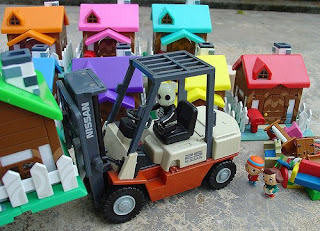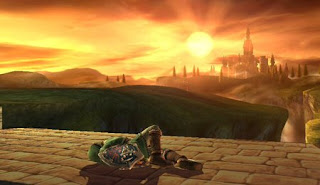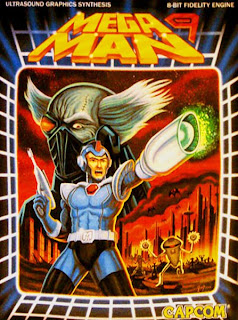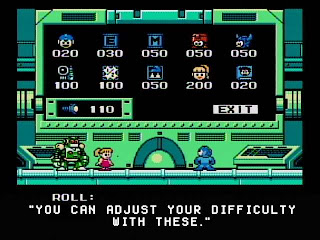I do not speak for all gamers. And I certainly can't speak for most of us because the impressions playing video games leaves on us is as multitudinous and as variegated as the games we play. I can only speak for myself in hopes that you can relate as a gamer so we all can grow to understand what it means to be a gamer and how the potential thereof.
Growing up I didn't know how different I was from non-gamers; people who don't play video games or games of other sorts. Video gaming started with me at the early age of 3 when I first received NES with Super Mario Bros. 3. Thus began one of the most important pillars of education in my life. Before I entered the public education system, before I learned to play the piano or violin, before I learned how to play soccer, before I learned to love English, before I learned to write, read, before it all I played video games and learned how to learn.
As a child, my mental process while playing a video game went like this: Take in data through the senses (mostly sight). Recognize and organize concepts applying knowledge and categorizing data as necessary. Formulate a plan of action. Send the appropriate signals to the hands to manipulate the controller. Observe results. Repeat process. This method is how we learned as children, and by continuing to play games, I never lost this natural ability to learn.
Video games are interactive. The screen tells me information about the game, and the game in turn communicates and reflects me. Just like how my mental and emotional state is evident in the music I play, video games reflect the internal dialog that exists between the game world and my mind. So by playing video games over the years, I've been an audience to my own mental development, which has shaped my perspective on life.
So we're looking at how playing video games can shape one's perspective. The best way to understand what a video game "does" or how it functions is to not think of it as a game in the first place. While the older generation will look at us gamers and think we're rotting our brains away, we, gamers, know that video games have great potential not only as sources of entertainment but as an art form and teachers as well. Think of a video game as a self contained interactive learning environment where an individual can learn the intricacies of a functioning system through hands on interactions and experimentation in a world if infinite attempts and resources.
Playing a video game is essentially a personally powered, self motivated experience involving exposure, experimentation, practice, and testing. When I was a kid, I was never taught to separate all things video games from any thing else in the world. Video games weren't some new thing unlike the other mediums that have come before it, a dangerous evil destined to be regulated and restricted, or "just an entertainment device." To me, video games were just like everything else. And everything else was just like a game. School was a "game" to me where I learned how to filter and organize information that was useful to me while meeting challenges set by the teacher. The rules of the household weren't oppressive or restrictive boundaries, but challenges/obstacles to be worked around. Comparatively, school and household chores were much easier than defeating Bowser.
And when I took my first piano lesson at around the age of 7, I saw the piano as the largest controller I had ever seen. Each key played only a single note (individual). All the keys were arranged in half steps with the low notes at the bottom and the high notes at the top (intuitive). The sound only played as long as I held a key down (direct). I could hit a key with varying degrees of force to play louder or softer notes (dynamic). From the start I breezed through learning the names of the keys, reading sheet music, and playing through the first few levels of the beginners repertoire. After all, playing beginner piano was simple compared to internalizing the algorithms of Tetris of memorizing the world of Metroid 2.
By gaining more experience in different gaming genres, I picked up the skills of a master organizer. Being able to categorize the world around you exercises a critical skill in pattern recognition. We start by recognizing patterns within a single game. We figure out that we must use the same set of mechanics over and over in a variety of situations and combinations. We group the game elements that can hurt us as enemies. And we learn to recognize levels and stages and repeating challenges.
Then we recognize patterns within and between genres. Mario, Sonic, Kirby, and Samus all jump. Samus and Link explore. Link solves block puzzles like in Tetris. Tetris has a gradually increasing game speed like Space invaders. As we gain more experience in life and with video games, we begin to recognize patters that are much more subtle and complex than repeated mechanics, genres, matching colors, shapes, rhythms, or even note values.
I can recognize patterns in everything from body language, facial expressions, speech mannerisms, diction, emotional states, function, action, and other abstractions. Breaking down one element into its very essence (what it does and how it functions) to find similarities between it and seemingly unrelated elements is a skill that playing video games helps develop.
But it's not the repetitions, nor the hours of practice that the gamer puts into video games that generates this ability to organize. This unique ability stems from the most unique qualities of video games; interactivity and function. These are the elements that sit at the very core of the medium.
Video games teach us to see and think in functions. Enemies are designed to challenge one's path to a goal. Enemies function as obstacles that must be overcome to achieve success. Goomba aren't living creatures in Super Mario Bros. They're just elements that force me to jump on, jump over, or be hurt. In Mario's world, that's all a Goomba is. It's contrary motion. The intent of one function set against another. In a similar fashion, pit falls are not decorative. They're dangerous. Throw a 1up mushroom into the equation and perhaps it's worth risking one's life for. In a given situation, gamers can calculate any number of relevant factors to make an informed decision on approaching the goal. Collecting coins earns extra lives. If they only awarded the player with points, then the function of the coins wouldn't have much of a point and wouldn't impact gameplay the way the currently do. Who plays Super Mario Bros. for points? Points have no function in helping the player rescue the princess.
In the same way that Zelda highlights key words indicating specific objects or locations the player must seek, words pop out at me in lectures, when receiving instruction, or reading for school. I would have found it much more difficult to read Strachey's Narrative or Paradise Lost without setting a filter/goal for the information I needed. The methodology I have just described is surprisingly similar to the work of Paul Scheele at the Learning Strategies Corporation.
One of
Scheele's programs teaches people who to read with their whole mind to maximize their time and retention of material. Some of the steps in the program involves recognizing how a text is organized, surveying the material lightly, forming questions, setting goals, and then going over the text. The functional similarities between playing video games and reading with one's whole mind is not coincidental. Honing in on specific words that contain the most purpose for achieving one's goal is a way of looking at the world through function. This view is focused, purposeful, and goal oriented and is something that gamers naturally use.
Gamers see winning and losing differently than non-gamers. We've walked a million miles, thrown a thousand punches, and conquered hundreds of Koopa. Yet on the road to victory we've lost so many more lives, ammunition rounds, vehicles, and friends (Yoshi). By playing video games gamers know that to understand the world (even a virtual gaming world), one must experiment and practice. Losing is a natural process of learning, but for the gamer failing is never a permanent part of the equation.
Gamers have access to infinite lives, which means unlimited tries especially now that gaming has moved away from the arcades. We will lose, die, and try again until we are victorious. The game never gets tired or takes a break, and it's always there when you're ready. In this way, all efforts eventually converge on victory. Losing is just a funny way to win. At least, this is a probable attitude that video games instill in gamers.
So gamers see the world through function and goals, which makes us always up for a challenge. We won't just make a game out of things, we'll make a war out it. We'll fight against each other in our favorite multiplayer games. We'll fight on forums over our favorite games. And we'll even fight in the market over our favorite consoles. If you're reading this, then chances are you are no stranger to the raging console wars that exist where the NPDs proclamations detail the skirmishes of this global war. Our vehemence shrouded in animosity prowling the alleyways of the internet in a world where the illuminating rays of reciprocity have set long ago, has some people (gamers and non-gamers alike) worried.
Some wonder why the people of gaming forums are so brash and pugnacious with their comments and the way they deal with each other. Some wonder why we care so much about our games, the consoles they're published on, and upcoming titles. By now it should be clear why gamers exhibit such behavior. In some part, we've all been raised by our video games. It's not difficult by any stretch of the imagination to see that gamers draw a functional connection between their lives, and the games they play.
Being a gamer means a lot of different things to a lot of people. Only by understanding how a game functions and how a player responds or fits into that function, will we understand that being a gamer is like being a kid where learning, playing, and self expression are an inseparable full time job.




























